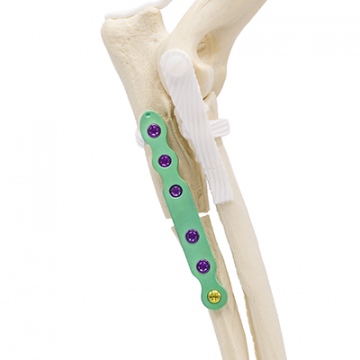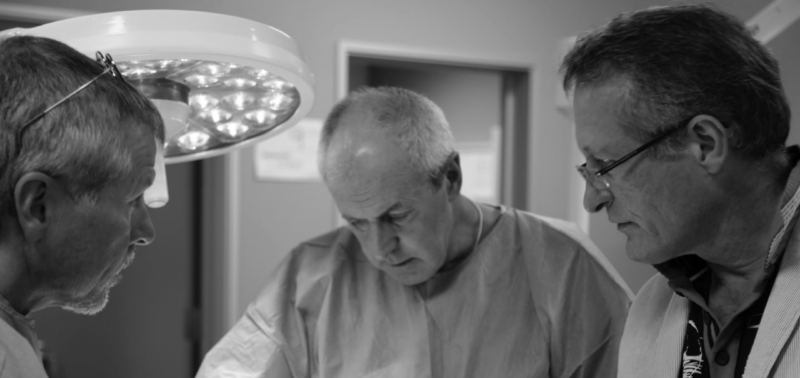
Why PAUL?
Proximal Abducting Ulnar Osteotomy (PAUL) is a promising advancement for the care of canine elbow dysplasia patients. While palliative, PAUL has delivered improvements of 1 – 2 lameness grades in patients as old as 10. The ideal patient is younger, ~1 – 3 years of age, in the early stage of disease. The surgical technique is straightforward. Complications are minimal, easily avoided with comprehensive instruction and modest practice.
The PAUL workshop is available as a dry and/or wet lab workshop. Both workshops contain lectures on background, planning, surgical technique, clinical experience, and complications.
Included in the workshop booking is enrolment in the online introductory PAUL-II course that provides relevant information about the PAUL system, indications for PAUL, pre- and post-operative care, and the surgical technique.
Top reasons why participants take a PAUL workshop:
- PAUL provides a significant improvement to the quality of life of patients with few treatment options.
- Frustration with clinical outcomes following fragment removal and/or medical management.
- Offering PAUL elevates the standard of care you can provide to patients.
- Enhance your skill set and knowledge in treatment of forelimb lameness.
Why with KYON?
- PAUL was invented, developed and refined by KYON.
- Strengthen your network with other professionals and instructors.
- KYON provides supplementary documentation before and after the workshop.
- Small groups and extensive cadaver training in the wet lab workshops.
Participant Profile
The PAUL workshop is appropriate for veterinary surgeons with well-rounded orthopedic experience, performance Fragmented Coronoid Process removal, bone plating, and TPLO/TTA techniques.
Your OR and hospital should be suitable for orthopedic surgery.
Some surgeons and clinics will have more preparation to do than others. We are happy to discuss your specific circumstances and chart a path.
Workshops
This practical PAUL workshop aims to improve your understanding of all critical aspects of PAUL and equip you with the necessary skills to achieve consistently successful clinical outcomes.
- Function of the elbow and rationale: You will review the anatomy, structure, and function of the elbow and review the PAUL rationale and theory.
- Examination of the elbow: Learn a comprehensive physical and orthopedic examination strategy of the canine forelimb to identify elbow diseases.
- Pre-op planning: Learn how to correctly plan a PAUL procedure using physical templates and/or digital templating tools.
- Healing process: Learn the biological and biomechanical aspects of the PAUL healing and recovery process.
- Surgical technique: Disciplined technique is key to the success of the surgery. You will learn the surgical procedure on bone models using the KYON system.
- Post-op evaluation: Evaluation of the procedure and discussion of risks, potential intra-operative complications, and potential pitfalls and technical mistakes.
- Clinical Experience: Presentation of personal clinical experience by course instructors and review of the overall experience of PAUL surgeons.
- Complication management: Discussion on avoiding and managing complications and suboptimal outcomes.
Workshop Outcome: Completion of this workshop prepares you to perform PAUL independently and incorporate the procedure into your clinical services.
Duration: 1 Day
Course Type: Dry lab and/or Wet lab
Requirements: Attendees should be experienced in conventional treatments for elbow disease-related conditions (e.g. FCP removal) and knowledgeable in fracture plating.
